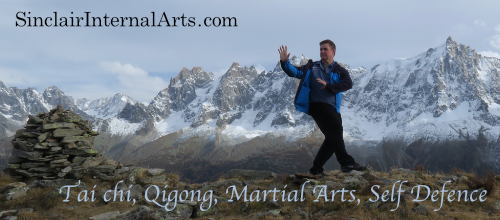Internal Skill
Neigong 內功 (pronounced “nay gong”) or Qigong 氣功 (pronounced “chee gong”)
Sometimes called “Chinese Yoga,” neigong is the ancient art and science of using breath, posture, movement, stretching, meditation, visualization, and/or sound to cultivate subtle energy, improve health, transform consciousness, and increase power for martial arts.
There are an estimated 3000 schools of neigong in China. Most of these can fit into one or more of the following categories:
- Medical Neigong
- Daoist Neigong
- Buddhist Neigong
- Emitting/Absorbing/Healing Neigong
- Wushu (Martial Arts) Neigong
Tai chi neigong incorporates elements of daoist neigong and wushu neigong, and has much in common with other categories of neigong as well. The daoist neigong has no religious component whatsoever, and the wushu neigong elements are much more gentle and “soft” than other types of wushu neigong.
Tai chi neigong provides the mental and physical foundation for great tai chi practice. It loosens the joints, warms the muscles, stimulates qi production and circulation, and improves concentration.
Without some kind of internal practice, it is impossible to achieve the phenomenal “internal” martial power that tai chi chuan is famous for.
The health benefits of tai chi neigong are so widely recognized that most people who practise tai chi chuan do so primarily for their health.
Many teachers will say that when you practice tai chi chuan forms (routines) 50% of the art is considered neigong. So it is good to view the routines as a context for practising qigong.
The health benefits of tai chi neigong include reduced stress, a stronger immune system, deeper awareness, better coordination, increased vitality, improved tai chi skill, and internal power.
Some consider qigong to be an important adjunct to tai chi, while others see it as an essential part of tai chi training.Tai chi neigong varies according to the teacher, school, and style. But some neigong exercises include zhan zhuang (standing like a tree), breath placement, silk reeling, dantlen power, small and large energy circulation (microcosmic orbit), absorbing qi, etc.
